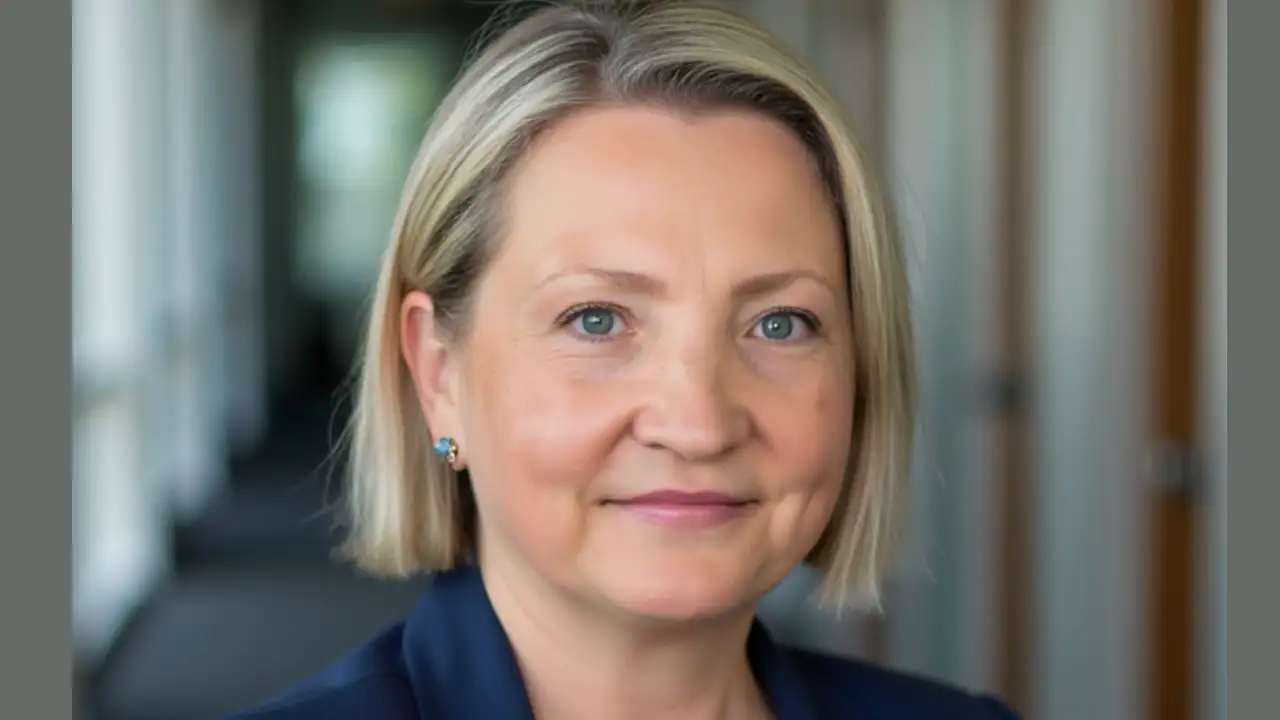Copyright The Boston Globe

Now a 45-foot giant, the tree is scheduled to arrive in Boston on Tuesday to be the centerpiece of the city’s Christmas decorations, extending a decades-old tradition of Nova Scotia thanking the Massachusetts city for its swift help after the 1917 explosion in the capital city of Halifax that killed roughly 2,000 people. The warm exchange endures despite the White House’s frosty relationship with Canada, and this year came with a twist: Michelle Wu, who has emerged as a prominent critic of President Trump, was there Wednesday to receive it in person, making her the first Boston mayor to attend the tree cutting ceremony, according to her office. Dozens of school children in matching white beanies cheered with a crowd of local onlookers, whose parked cars stretched a quarter-mile long. The crowd gasped and applauded as the conifer was cut by axe and chainsaw from every side, steadily lowered and then loaded onto a truck for its trip south. Every year since 1971, Nova Scotians have donated a towering tree like this one to preside over Boston Common during the Christmas season. The tree lighting ceremony this year is scheduled for Dec. 4. Retrieving the tree was the stated purpose of Wu’s three-day swing this week through Nova Scotia. She was also here to send a message that even as Trump ratchets up tensions with Canada, she and other local Democratic leaders will continue to honor their ties to their northern neighbor. Wu acknowledged those challenges in remarks Wednesday, earning cheers when she said that “Boston refuses to bow down to chaos and cruelty, even when it’s coming from our own federal government.” “I wanted to be here to say thank you for continuing this special tradition, and I wanted to affirm how important this friendship is to the people of Boston — no matter what’s happening at other levels of government," she said. Over the years, as the tree grew along with his children and later his grandchildren, Ronald Feener lovingly tended to it — fertilizing and pruning, work that eventually required a ladder. In the last 10 years, the family joked that one day it could be tall enough to be the prized “Tree for Boston.” This year, it qualified. The Feeners watched proudly Wednesday as the tree came down. Wu took a turn at the chainsaw alongside Waddie Long, a Nova Scotia Community College instructor who has felled the “Tree for Boston” for most of the last decade. Long, who estimated this year’s tree weighs some 5,000 pounds, wore a Boston Bruins jersey for the occasion, though he later confessed he’s a Montreal Canadiens fan. “Today, we’re all Boston fans,” he said, setting down his chainsaw. The current U.S.-Canada tensions are just a “glitch,” Long said, and will pass — he’s sure of it. “How many times do I have to say this, eh?” he said. The tree tradition was forged in tragedy. On Dec. 6, 1917, two ships collided near Halifax Harbour. One of them, the 320-foot French steamship the Mont Blanc, was carrying nearly 3,000 tons of explosives intended for the Allied war effort in World War I. It soon caught fire and drifted toward the waterfront. A crowd gathered on the shore as crew members abandoned ship and cried out warnings. About 20 minutes later the Mont Blanc exploded. The blast and resulting blaze left about a quarter of the port city’s population homeless, and flung fragments as far as two miles. At the time, it was considered the worst manmade disaster in history. Before long, a blizzard settled on the shattered city, taxing its recovery even further. Word came fast to Massachusetts, where local organizers rushed to get aid workers north that same night. Help came first by train, then on a ship: doctors, nurses, even journalists. Back in Boston, local politicians leapt into action. Governor Samuel W. McCall and Boston Mayor James Michael Curley spoke at a fundraiser at Faneuil Hall. At a time when a loaf of bread cost less than a dime, their rally raised $100,000 in its first hour. Since then, the communities have been linked in a story known across the Canadian port city. Halifax sent Boston a thank-you tree in 1918. The tradition was revived in 1971 and has been in place since. Officials from Nova Scotia — and residents, too — often traveled to Boston for the tree lighting ceremony, but before Wednesday, a Boston mayor had never attended the tree cutting in Canada, Wu’s office said. This year, as the relationship between Canada and the U.S. frayed, there was a moment when Wu feared for the local tradition. Trump had threatened to make Canada the 51st state, by “economic force” if necessary. His administration had levied its first round of tariffs on its neighbor to the north, long a close ally and important trading partner. Wu this week recalled a particularly candid meeting with Bernadette Jordan, the consul general of Canada to New England, who told her and other Boston-area mayors that “Canadians felt that a longtime relationship with the United States is now being ripped apart.” “There was a moment where I said, ‘I wonder if they’re still going to send the Christmas tree to Boston,’” Wu told reporters in Halifax this week. She needn’t have worried. “No. Never. Never,” said Halifax resident Tahir Khan, 45, when asked whether local distaste for Trump could ever disrupt local enthusiasm for the tree tradition. Khan, a retired master corporal with the Canadian military, said Nova Scotians know well the story of how Boston came to their aid; Trump may be loathed by many Canadians, Khan said, but he’s only “one single person.” “He doesn’t speak for everybody else in the United States,” Khan said. “He can mouth off, whatever he wants, it doesn’t phase us one bit.” To snub Boston by denying the city its tree? “That’s a sin,” he said. Indeed, the “Tree for Boston” is a serious affair. Nova Scotian officials receive about eight to 10 submissions each year, and keep their eye on other candidates around the province as the conifers approach the minimum height requirement of 45 feet. Officials look for a fir or white spruce that is full and dense with the classic Christmas tree shape and dark green color. Once dispatched, the tree often makes several stops, including this year at a school and at the Halifax Parade of Lights, and its progress is documented on several social media platforms. The story of the tree, and of Boston’s great service, was told and retold as Wu this week carried out her own version of a targeted diplomatic mission. Just before the mayor departed from Logan International Airport Sunday night, gate agents at the Air Canada ticketing counter were reading off iPhones to each other about the story of the tree. The tale was recounted Wednesday at the tree cutting ceremony in Nova Scotia’s Lunenburg County, which on highway signs bills itself as the “balsam fir Christmas tree capital of the world.” And as Wu met with local officials and business leaders here this week, many mentioned the tradition unprompted. “Not your first trip to Halifax, is it?” Lane Farguson, an official with the Halifax Port Authority, asked Wu during her tour Monday. “My very first trip!” Wu said with a smile. “We’re very excited.” “Do you know the story of the tree that we ship down to Boston?” Farguson asked. Jordan, the consul general, cut in. “That’s why we’re here.”



